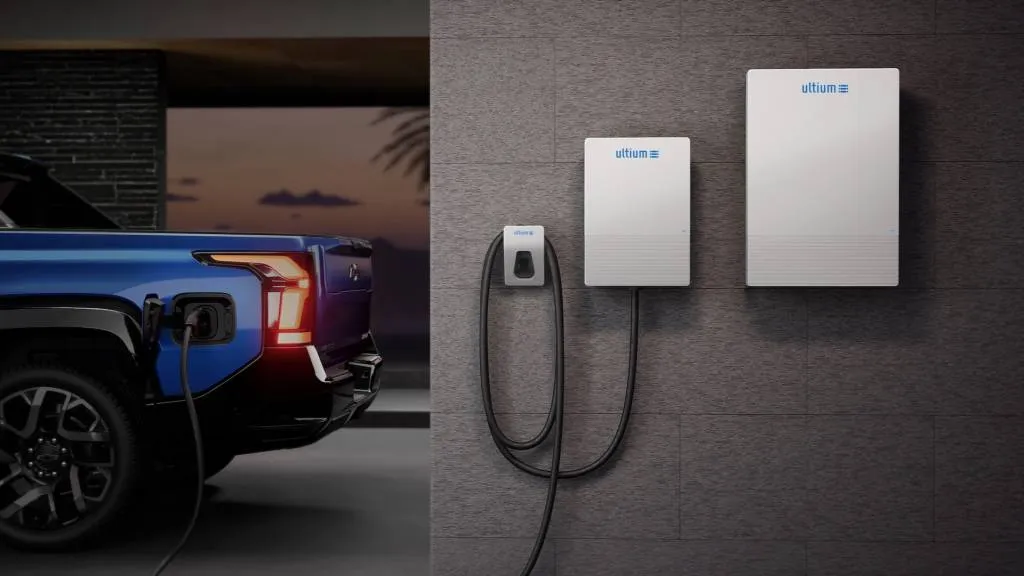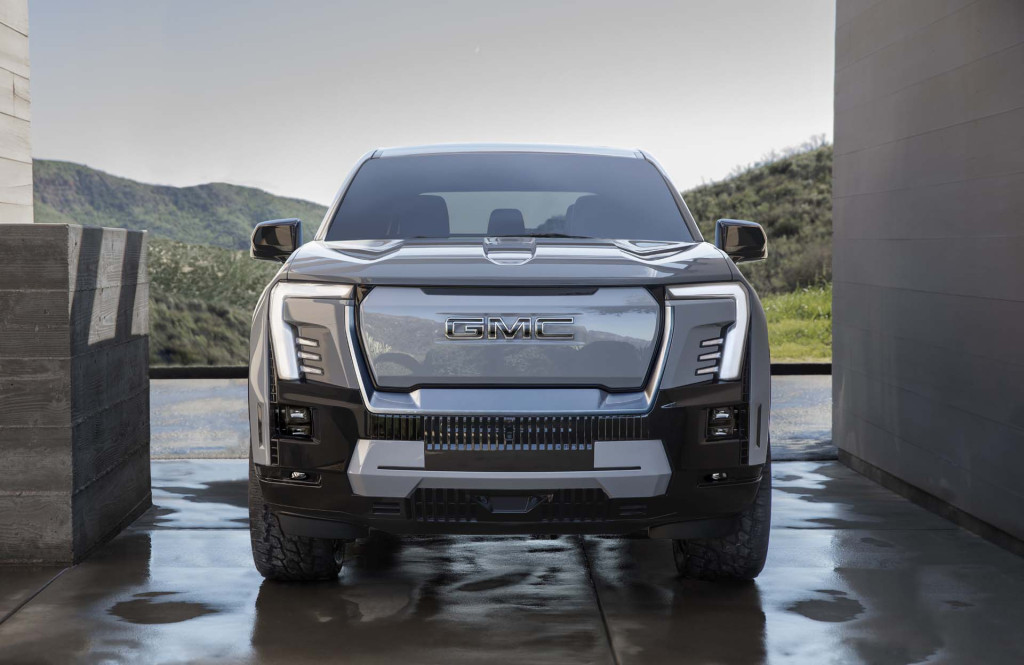General Motors on Tuesday announced that it will make bidirectional vehicle-to-home (V2H) charging capability available on all EVs using its Ultium component set by the 2026 model year, allowing more EVs to serve as home backup power sources.
The V2H feature will roll out as previously announced on the 2024 Chevrolet Silverado EV RST, followed by the 2024 GMC Sierra EV Denali Edition 1, 2024 Chevrolet Blazer EV, 2024 Chevrolet Equinox EV, 2024 Cadillac Lyriq, and the Cadillac Escalade IQ, slated to be revealed August 9, according to a GM press release.

2024 Chevrolet Silverado EV with GM Ultium Home energy system
GM introduced its V2H systems under a new GM Energy business last October, and detailed the hardware to be sold under the Ultium Home brand name earlier this year. The initial Ultium Home V2H Bundle includes an AC home charger, dubbed the PowerShift Charger, that allows EVs to discharge power from their battery packs, along with an Enablement Kit that adds an inverter and “dark start” battery.
GM also plans to offer energy-storage units for greater backup power capacity and integration with home solar. The automaker previously confirmed that it will refer customers to SunPower, already its preferred EV charging installer, for installation of Ultium Home V2H hardware. But GM hasn’t discussed hardware or installation costs. Ford priced out a similar system for the F-150 Lightning in May 2022 at about $6,000 with installation.

2024 GMC Sierra EV Denali Edition 1
Timing for V2H availability in EVs other than the ones mentioned in this announcement will be revealed at a later date. The GMC Hummer EV pickup and SUV get more limited bidirectional charging capability, dubbed Power Station, for the 2024 model year. It allows the electric Hummers to charge other EVs at 6 kw or provide up to 25 amps of output at either 120 volts or 240 volts, but isn’t officially rated for V2H use.
GM has also started to investigate how its EVs could do more than provide power to individual homes—by backing up the power grid itself—with a California pilot program announced in 2022 with utility Pacific Gas & Electric (PG&E).








